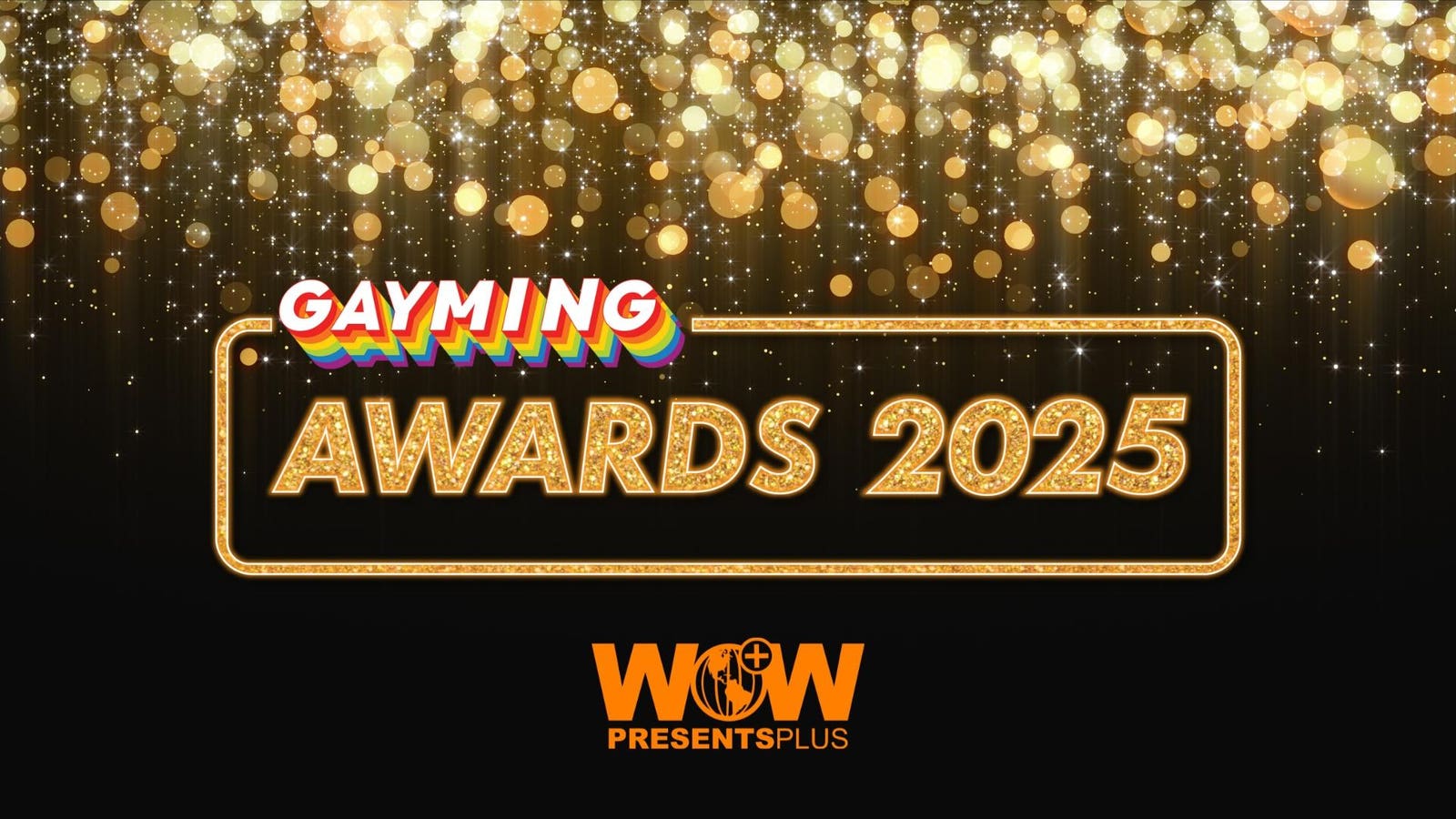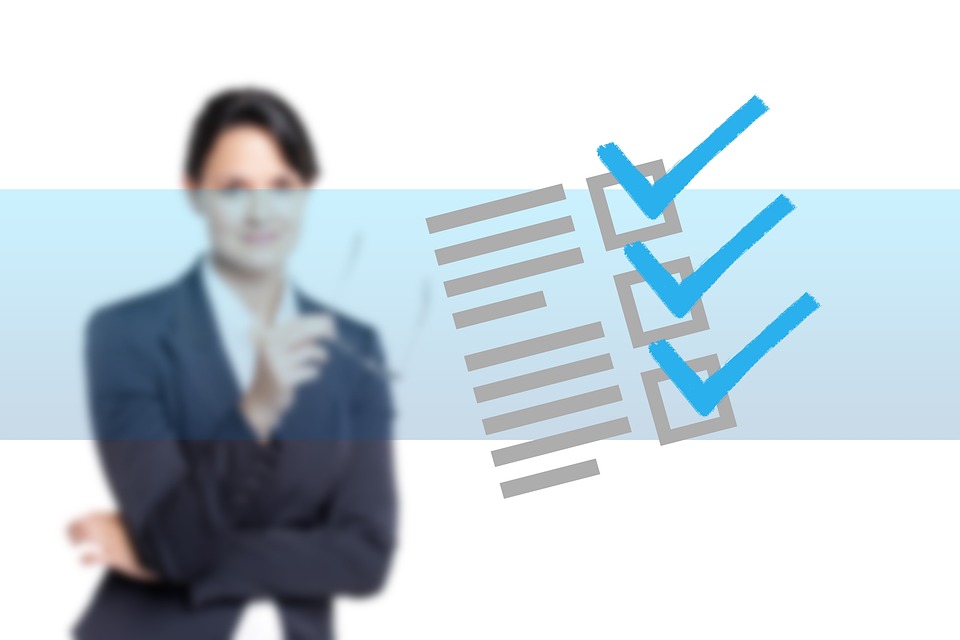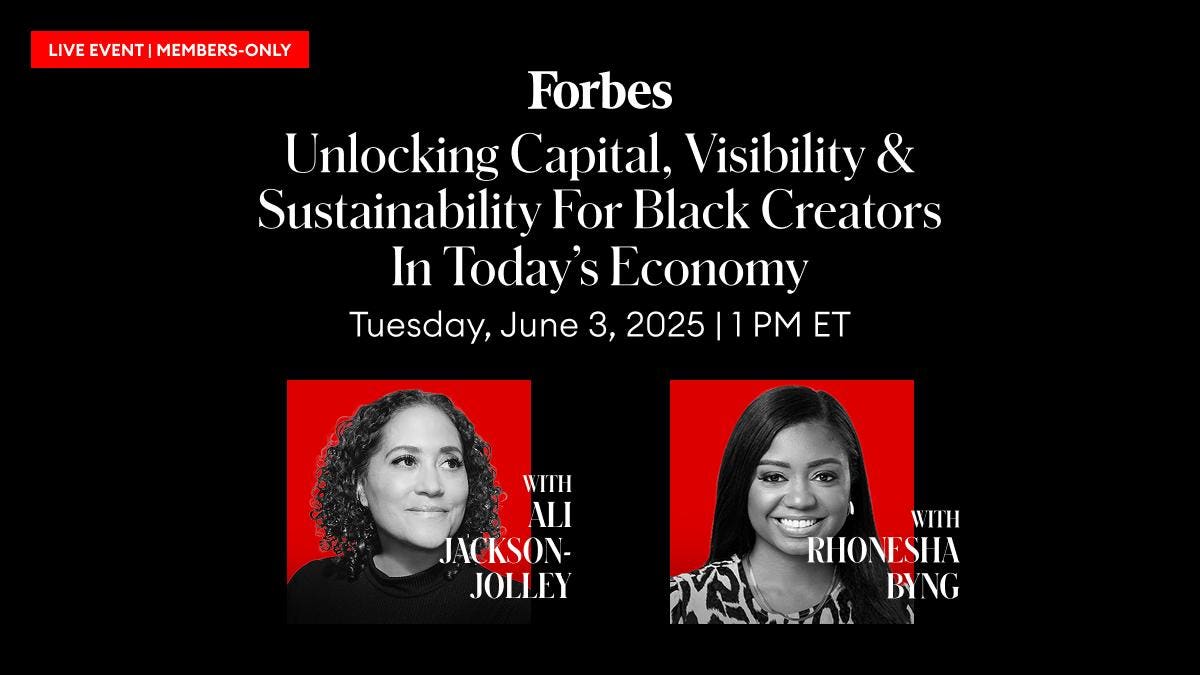Diversity and Inclusion (DEIA)
LGBTQ+ Gaming Awards Go Global

The Gayming Awards 2025: A Global Celebration of LGBTQ+ Contributions in Gaming
The World’s Only LGBTQ+ Video Game Award Show Returns
The Gayming Awards, the world’s only LGBTQ+ video game award show, is set to return for its fifth year, building on the success of its 2024 outing with a new broadcast partner. The event, which will air exclusively on July 8, 2025, is now accepting nominations, which can be submitted at Gayming’s website.
Partnership with WOW Presents Plus
Gayming Magazine, a British-based video game publication, has sealed a deal with WOW Presents Plus, the service best known for its worldwide syndication of the RuPaul’s Drag Race franchise, to broadcast the event globally. This partnership will help reach a broader audience and cement the Gayming Awards’ position as the main event to bring together the gaming and LGBTQ+ communities.
New Categories and Awards
The Gayming Awards 2025 has introduced two new categories: LGBTQ+ Voice Actor of the Year and the Community Impact Award. These additions aim to spotlight the achievements of voice actors and individuals or groups making a positive difference in the LGBTQ+ gaming community. The event will feature a total of 13 categories, including Game of the Year, Gayming Magazine Readers’ Award, and Best LGBTQ+ Character, among others.
All 13 Categories in the 2025 Gayming Awards
- Game of the Year
- Gayming Magazine Readers’ Award
- Gayming Icon Award
- Industry Diversity Award
- Community Impact Award
- Authentic Representation Award
- Best LGBTQ+ Character
- Best LGBTQ+ Indie Game
- LGBTQ+ Voice Actor of the Year
- LGBTQ+ Content Creator of the Year
- LGBTQ+ Streamer Rising Star Class
- Best LGBTQ+ Contribution to Esports Award
- LGBTQ+ Geek Entertainment of the Year Award
Previous Year’s Success
The 2024 Gayming Awards saw the success of games like Baldur’s Gate 3 and Thirsty Suitors, with the latter picking up several awards. By partnering with WOW Presents Plus, Gayming Magazine and Awards creator Robin Gray hopes to reach a broader audience and continue to establish the event as a key cultural moment for both gaming and LGBTQ+ communities.
Conclusion
The Gayming Awards 2025 is set to be a milestone event, bringing together the gaming and LGBTQ+ communities to celebrate and recognize outstanding contributions. With its new broadcast partner and expanded categories, the event is poised to reach a global audience and continue its mission to uplift, celebrate, and unite the LGBTQ+ community through the power of video games.
Frequently Asked Questions
- When is the Gayming Awards 2025 taking place?
The event will air exclusively on July 8, 2025. - How can I submit nominations?
Nominations can be submitted at Gayming’s website. - What are the new categories in the 2025 Gayming Awards?
The two new categories are LGBTQ+ Voice Actor of the Year and the Community Impact Award.
Diversity and Inclusion (DEIA)
Sean Combs Trial Highlights Intimate Partner Violence

As the Sean Diddy Combs trial ends its third week, a long list of sorted details into Comb’s now notorious “freak offs” have emerged and stunned the public. Among those details are disturbing testimony that Cassie Ventura Fine – model, singer, and former girlfriend of Combs — shared during the first week of the trial. Much of her testimony centered around her alleged experiences of physical, verbal, and emotional abuse at the hands of Combs. Although he is not being charged with domestic violence or assault, many have felt her testimony was compelling and spoke to a much larger issue that women around the world experience daily – domestic abuse or intimate-partner violence (IPV).
Prevalence of Intimate Partner Violence
According to the Emory University School of Medicine, women are 5 to 8 times more likely than men to be victimized by an intimate partner, and every year, nearly 5.3 million incidents of intimate partner violence occur among U.S. women aged 18 and older. In fact, women between 16 and 24 years of age are most likely to be victimized by an intimate partner, and over 47% of women have encountered contact sexual violence, physical violence, or stalking by an intimate partner during their lifetime. Sadly, most IPV incidents are not reported to the police, with only 20% of rapes and sexual assaults, 25% of physical assaults, and 50% of stalking towards women reported. Additionally, only about 1 out of 5 IPV survivors with physical injuries seek professional medical treatment. That said, despite severe under-reporting, calls related to IPV make up about half of all violent crime calls to police departments.
Signs of Domestic Violence
Even more disheartening, IPV results in nearly 1,300 deaths and 2 million injuries every year in the U.S., and more than three women are killed by their husbands or boyfriends every day. IPV can present in multiple forms of abuse, and it’s essential to recognize that the signs may differ depending on the relationship. Some of the more common signs of domestic violence include physical aggression, such as slapping, hitting, or pushing. Verbal and emotional abuse are also common forms of abuse. Abusive partners can have unpredictable moods that often change quickly and drastically. They may verbally threaten their partner, call them names, swear at them—or they may threaten to hurt themselves, their partner, or loved ones. Abusers may minimize their partner’s feelings and can show jealousy, suspicion, and anger, even if it’s unwarranted.
Types of Abuse
Other signs of domestic abuse include someone trying to control their partner’s time. They may monitor activities like attending classes or seeing friends and family. An abuser may isolate their partner by limiting phone use or forcing their partner to stay at home. They may also become financially abusive by controlling funds, including making financial decisions alone or taking their partner’s money without permission to control the person or to be punitive. Stalking or repeated unwanted attention or contact that triggers fear or worry about safety or the safety of others who are close to the survivor is also another form of abuse. It’s essential to keep in mind that abuse does not need to have multiple occurrences or be carried out over years to be considered domestic violence or IPV. According to experts, even one episode can have profound impacts and should not be overlooked.
Effects of Intimate Partner Violence
The effects of IPV can be severe, chronic, and pervasive. According to the American Psychiatric Association, 20% of IPV survivors develop mental health conditions. A recent study found that almost 60% of the participants experienced post-traumatic stress disorder (PTSD). A similar study found that IPV survivors had higher prevalence rates of depression compared with non-IPV survivors (2.25% vs. 0.43%) and higher prevalence rates of anxiety disorders compared with non-IPV survivors (1.37% vs. 0.54%). Individuals dealing with diagnoses such as these may experience being withdrawn, feelings of hypervigilance, loss of appetite, and suicidal ideation. Other effects can include shutting people out, not wanting to do things that were once enjoyable, being unable to trust others, and having low self-esteem. Physical symptoms are also common and can include:
- Heart / cardiovascular issues
- Gastrointestinal/digestive issues
- Chronic pain
- Sexual/reproductive issues
- Symptoms of pulmonary or musculoskeletal conditions
- Traumatic brain injury
Breaking the Cycle of Abuse
Survivors may also struggle with emotional regulation, dissociation, and numbing and have trouble reading social cues. In some cases, survivors may develop an addiction to substances such as alcohol or drugs. Many women who have experienced violence cope with the associated trauma by using drugs, drinking alcohol, smoking, or overeating. Research shows that about 90% of women with substance use problems have experienced physical or sexual violence. Researchers have also found that mental health outcomes of domestic violence can become a vicious cycle. Survivors can believe they are powerless to control violent behavior or to develop resources to change their situation. This can potentially set up a long-term pattern of violent partnerships. The American Psychiatric Association states that survivors of domestic violence may blame themselves for the abuse they received. Similarly, victim blaming by others is also common and can perpetuate IPV. Victim blaming is considered to be any response to IPV that explicitly states or implies that the survivor is to blame for the abuse they have experienced.
Conclusion
Experts caution women to be aware of the signs of IPV and attempt to act as quickly as possible to separate themselves from their partner and the relationship if they find they are in an abusive relationship. Because it may be difficult for some to pull themselves out of the cycle of abuse, drawing from family and friends for support to help transition out of the relationship can be especially helpful. In-person and online support groups can also be beneficial in identifying a plan to leave the relationship and to provide overall support and resources with various needs such as housing, mental health counseling, and seeking medical attention.
FAQs
Q: What is intimate partner violence (IPV)?
A: Intimate partner violence (IPV) refers to any behavior within an intimate relationship that causes physical, psychological, or sexual harm to those in the relationship.
Q: What are the signs of domestic violence?
A: Common signs of domestic violence include physical aggression, verbal and emotional abuse, unpredictable moods, and controlling behavior.
Q: How common is IPV?
A: According to the Emory University School of Medicine, women are 5 to 8 times more likely than men to be victimized by an intimate partner, and every year, nearly 5.3 million incidents of intimate partner violence occur among U.S. women aged 18 and older.
Q: What are the effects of IPV?
A: The effects of IPV can be severe, chronic, and pervasive, including mental health conditions, physical symptoms, and substance abuse.
Q: How can I get help if I am in an abusive relationship?
A: If you are in an abusive relationship, it is essential to seek help as soon as possible. You can reach out to family and friends for support, join in-person or online support groups, and seek resources such as housing, mental health counseling, and medical attention.
Diversity and Inclusion (DEIA)
The Business Case for DEIA: How Inclusive Practices Can Drive Growth

In today’s fast-paced business world, companies are leveraging software and platforms for DEIA (Diversity, Equity, Inclusion, and Accessibility) to create a more inclusive and diverse workplace. By implementing DEIA practices, businesses can tap into a wider talent pool, enhance creativity and innovation, and improve their bottom line. Let’s dive in and explore the benefits of DEIA in the business world.
What is DEIA?
DEIA stands for Diversity, Equity, Inclusion, and Accessibility. It refers to the practices and policies that promote diversity, ensure equity, foster inclusion, and provide accessibility in the workplace. DEIA is not just a moral imperative, but a business strategy that can drive growth, improve productivity, and enhance reputation.
Diversity: The Foundation of DEIA
Diversity refers to the presence of different groups or individuals with unique characteristics, experiences, and perspectives within a workforce. A diverse workforce can bring together people from different backgrounds, cultures, and identities, leading to a more innovative and creative work environment. Companies with diverse workforces are more likely to attract top talent, improve customer satisfaction, and increase revenue.
Equity: Ensuring Fairness and Justice
Equity refers to the practice of ensuring fairness and justice in the workplace. It involves creating a work environment where everyone has equal access to opportunities, resources, and support. Equity is not just about treating everyone the same, but about recognizing and addressing the unique needs and challenges of different groups. Companies that prioritize equity are more likely to build trust with their employees, customers, and stakeholders.
Inclusion: Creating a Sense of Belonging
Inclusion refers to the practice of creating a work environment where everyone feels valued, respected, and supported. It involves fostering a sense of belonging among employees, customers, and stakeholders. Inclusive companies are more likely to retain top talent, improve employee engagement, and enhance customer loyalty.
Accessibility: Removing Barriers and Obstacles
Accessibility refers to the practice of removing barriers and obstacles that prevent people from fully participating in the workplace. It involves creating a work environment that is accessible to people with disabilities, as well as those from diverse backgrounds and identities. Companies that prioritize accessibility are more likely to tap into a wider talent pool, improve customer satisfaction, and enhance their reputation.
The Business Benefits of DEIA
Implementing DEIA practices can have numerous business benefits, including:
Increased Revenue and Growth
Companies that prioritize DEIA are more likely to experience increased revenue and growth. A study by McKinsey found that companies with diverse workforces are 35% more likely to outperform their less diverse peers. DEIA can help companies tap into new markets, improve customer satisfaction, and enhance their reputation.
Improved Productivity and Innovation
DEIA can also improve productivity and innovation in the workplace. A study by Harvard Business Review found that diverse teams are more likely to innovate and solve complex problems. DEIA can help companies foster a culture of creativity, experimentation, and risk-taking.
Enhanced Reputation and Brand
Companies that prioritize DEIA are more likely to enhance their reputation and brand. A study by Glassdoor found that 67% of job seekers consider a company’s diversity and inclusion policies when deciding where to work. DEIA can help companies build trust with their employees, customers, and stakeholders.
Implementing DEIA Practices
Implementing DEIA practices requires a strategic and intentional approach. Companies can start by:
Conducting a DEIA Audit
Conducting a DEIA audit can help companies identify areas of strength and weakness in their DEIA practices. It involves assessing the company’s diversity, equity, inclusion, and accessibility policies and practices.
Developing a DEIA Strategy
Developing a DEIA strategy can help companies prioritize their DEIA efforts and allocate resources effectively. It involves setting clear goals, objectives, and metrics for DEIA.
Providing DEIA Training and Education
Providing DEIA training and education can help companies build a culture of inclusion and respect. It involves educating employees on DEIA concepts, policies, and practices.
Conclusion
In conclusion, implementing DEIA practices can drive growth, improve productivity, and enhance reputation in the business world. Companies that prioritize DEIA are more likely to tap into a wider talent pool, foster a culture of creativity and innovation, and build trust with their employees, customers, and stakeholders. By leveraging software and platforms for DEIA, companies can create a more inclusive and diverse workplace, leading to long-term success and sustainability.
Frequently Asked Questions (FAQs)
What is the business case for DEIA?
The business case for DEIA is that it can drive growth, improve productivity, and enhance reputation. Companies that prioritize DEIA are more likely to experience increased revenue, improved innovation, and enhanced customer satisfaction.
How can companies implement DEIA practices?
Companies can implement DEIA practices by conducting a DEIA audit, developing a DEIA strategy, providing DEIA training and education, and leveraging software and platforms for DEIA.
What are the benefits of DEIA for employees?
The benefits of DEIA for employees include a sense of belonging, improved job satisfaction, and increased opportunities for advancement. DEIA can also help employees develop new skills, build their professional network, and enhance their well-being.
How can companies measure the effectiveness of their DEIA efforts?
Companies can measure the effectiveness of their DEIA efforts by tracking metrics such as diversity and inclusion metrics, employee engagement and satisfaction, and customer satisfaction and loyalty. Companies can also conduct regular DEIA audits and assessments to identify areas of strength and weakness.
What is the role of leadership in implementing DEIA practices?
Leadership plays a critical role in implementing DEIA practices. Leaders must prioritize DEIA, model inclusive behaviors, and hold employees accountable for DEIA efforts. Leaders must also allocate resources, provide support, and foster a culture of inclusion and respect.
Diversity and Inclusion (DEIA)
Empowering Black Creators

Introduction to Unlocking Capital
The current economic landscape presents numerous challenges for Black creators, who often face significant barriers when attempting to access capital, visibility, and sustainability. These obstacles can hinder their ability to bring innovative ideas to life, grow their businesses, and achieve long-term success. However, there are ways to overcome these challenges and unlock the full potential of Black creators.
Understanding the Challenges
Black creators face a unique set of challenges in today’s economy. One of the primary obstacles is accessing capital, as they often lack the financial resources and networks needed to secure funding. Additionally, they may struggle to gain visibility for their work, making it difficult to attract new customers, partners, and investors. Sustainability is also a major concern, as Black creators must navigate complex systems and structures that can make it hard to maintain their businesses over time.
The Importance of Access to Capital
Access to capital is essential for Black creators, as it allows them to invest in their businesses, hire staff, and develop new products and services. However, many Black creators face significant barriers when attempting to secure funding, including limited access to traditional financing options and a lack of representation in venture capital firms. To address this issue, alternative funding models, such as crowdfunding and community-based investing, can provide critical support.
Building Visibility and Networks
Building visibility and networks is also crucial for Black creators, as it enables them to showcase their work, connect with potential customers and partners, and access new opportunities. Social media platforms, online communities, and industry events can provide valuable channels for promoting their work and expanding their professional networks. Moreover, collaborations and partnerships with other creators, businesses, and organizations can help amplify their voices and increase their visibility.
Strategies for Achieving Sustainability
To achieve sustainability, Black creators must develop strategies that enable them to maintain their businesses over time. This can involve diversifying their revenue streams, building strong relationships with customers and partners, and continuously innovating and adapting to changing market conditions. Additionally, accessing resources such as mentorship programs, business training, and networking events can provide critical support and help them navigate complex systems and structures.
Empowering Black Creators
Empowering Black creators requires a multifaceted approach that addresses the unique challenges they face. This can involve providing access to funding, mentorship, and networking opportunities, as well as promoting diversity, equity, and inclusion within the broader economic system. By taking these steps, we can help unlock the full potential of Black creators and support their efforts to build successful, sustainable businesses.
The Role of Technology
Technology can play a critical role in empowering Black creators, as it provides a range of tools and platforms that can help them access new markets, build their brands, and connect with customers and partners. Digital platforms, such as social media and e-commerce sites, can enable Black creators to showcase their work, sell their products and services, and build their professional networks. Additionally, technologies such as blockchain and cryptocurrency can provide new opportunities for secure, transparent, and community-driven funding models.
Policy and Advocacy
Policy and advocacy efforts are also essential for empowering Black creators, as they can help address systemic barriers and promote diversity, equity, and inclusion within the broader economic system. This can involve advocating for policies that support access to capital, promote diversity and inclusion, and provide resources and support for Black creators. By working together to advance these efforts, we can help create a more equitable and just economy that supports the success and sustainability of Black creators.
Conclusion
Unlocking capital, visibility, and sustainability for Black creators is a critical step towards building a more equitable and just economy. By understanding the unique challenges they face and developing strategies to address these obstacles, we can help empower Black creators and support their efforts to build successful, sustainable businesses. Through a combination of alternative funding models, digital platforms, policy and advocacy efforts, and community-driven initiatives, we can work towards a future where Black creators have the resources and support they need to thrive.
FAQs
Q: What are some of the primary challenges faced by Black creators in today’s economy?
A: Black creators face a range of challenges, including limited access to capital, lack of visibility, and difficulty achieving sustainability.
Q: How can alternative funding models support Black creators?
A: Alternative funding models, such as crowdfunding and community-based investing, can provide critical support for Black creators by offering new channels for accessing capital.
Q: What role can technology play in empowering Black creators?
A: Technology can provide a range of tools and platforms that help Black creators access new markets, build their brands, and connect with customers and partners.
Q: Why is policy and advocacy important for empowering Black creators?
A: Policy and advocacy efforts can help address systemic barriers and promote diversity, equity, and inclusion within the broader economic system, supporting the success and sustainability of Black creators.
Q: How can we work towards a more equitable and just economy that supports Black creators?
A: By developing and implementing strategies that address the unique challenges faced by Black creators, we can work towards a more equitable and just economy that supports their success and sustainability.
-

 Career Advice6 months ago
Career Advice6 months agoInterview with Dr. Kristy K. Taylor, WORxK Global News Magazine Founder
-

 Diversity and Inclusion (DEIA)6 months ago
Diversity and Inclusion (DEIA)6 months agoSarah Herrlinger Talks AirPods Pro Hearing Aid
-

 Career Advice6 months ago
Career Advice6 months agoNetWork Your Way to Success: Top Tips for Maximizing Your Professional Network
-

 Changemaker Interviews5 months ago
Changemaker Interviews5 months agoUnlocking Human Potential: Kim Groshek’s Journey to Transforming Leadership and Stress Resilience
-

 Diversity and Inclusion (DEIA)6 months ago
Diversity and Inclusion (DEIA)6 months agoThe Power of Belonging: Why Feeling Accepted Matters in the Workplace
-

 Global Trends and Politics6 months ago
Global Trends and Politics6 months agoHealth-care stocks fall after Warren PBM bill, Brian Thompson shooting
-

 Global Trends and Politics6 months ago
Global Trends and Politics6 months agoUnionization Goes Mainstream: How the Changing Workforce is Driving Demand for Collective Bargaining
-

 Training and Development6 months ago
Training and Development6 months agoLevel Up: How Upskilling Can Help You Stay Ahead of the Curve in a Rapidly Changing Industry

















